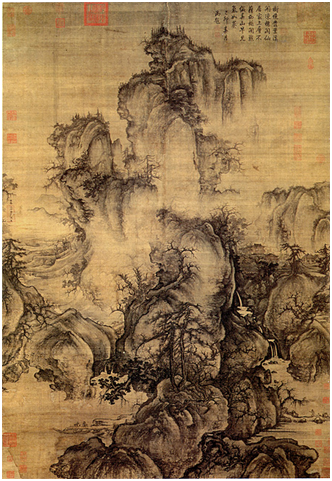郭熙的 “早春”
郑秀珍
这是北宋朝代郭熙画的画,名叫“早春”。画里有山, 树, 瀑布和雾。看起来这是一张山水画。国画里的山和水是代表阴阳的。虽然郭熙只用了黑色墨,但他用的笔画是跟书法一样的。这种笔画强调重视自然,充满活力。
郭熙是北宋朝代著名的风景画家。郭熙是1020年出生的。他是受过良好教育的宫廷画家。他发明的某些笔画对未来的画家有益。比如, 的技术使画看起来是立体的。
我很赞成郭熙的“早春”,但如果我是画家,我会加上一些颜色,这似乎会让画更丰富一点。我觉得这张画也有很多不同样的树。有的弯着,有的是直的。每一棵树都不一样。因此,郭熙很详细地画了“早春”。
Transcript:
Guoxi’s Early Spring
This is a painting named Early Spring by Guoxi. The painting shows a landscape of the mountains with many trees in a misty atmosphere. The presence of mountains and water represents the balance of yin and yang. Additionally, the painting strokes used here are same as those used in Chinese calligraphy. Although Guoxi only adopted black paint, the contrasting brush strokes emphasize the dormant energy in the picture.
Guoxi is a landscape painter from Northern Song dynasty. He was born in 1020. He was an educated court-painter. He developed detailed brushstrokes that became important for later painters. For instance, he introduced the “angle of totality”, which is a mechanism used to depict multiple dimensions within the picture.
There are many different forms of trees in this painting. Some bend, crouch or are vertical. This seems to add to the richness of the painting. Although the painting in itself seems intricate and detailed, I think additional colors would have made a contrast. In conclusion, Guoxi incorporated very intricate details when painting Early Spring.

